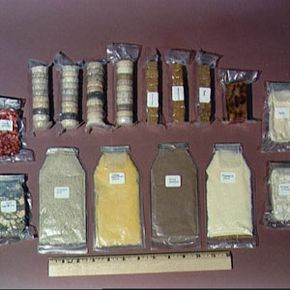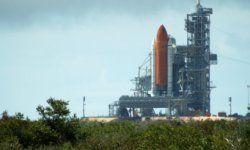When you consider the connection betweenNASAand food, your first thought might be of dehydrated "space" ice cream. Or perhaps you pictureastronautssqueezingfoodout of tubes like toothpaste. You'd be correct, but that's only part of the story. NASA technology has resulted in much more than just freeze-dried, oddly-packaged food. It has led to advancements in many different areas of food preparation here on Earth. In fact, NASA essentially invented an approach to food safety that is used in numerous areas of the food industry today.
It all started while NASA was planning how to feed astronauts in the first manned space program. In addition to being nutritious and space-friendly (meaning, it won't crumble in zero gravity), the food needed to be free of toxins and safe to eat.
Advertisement
NASA contracted with the Pillsbury Company in 1960 to develop food products for space. At the time, food safety programs were based on inspecting the end product, which wouldn't work for the astronauts' specially-developed food because so much testing would be required. Neither Pillsbury nor any other commercial company could guarantee uncontaminated food for the astronauts.
NASA and Pillsbury developed a system that was based on preventing problems from occurring in the first place. The Hazard Analysis & Critical Control Points (HACCP) system requires the identification of stages during the manufacturing process that could result in a food safety hazard. Once the potential hazards are found, they can be minimized or eliminated through monitoring. The system worked so well for NASA that the lead Pillsbury scientist, Dr. Howard Bauman, advocated that Pillsbury adopt it, too. Following two national food-safety scares in the early 1970s, the FDA asked Pillsbury to conduct an HACCP training program for FDA inspectors of canned food factories. Today, the FDA and the USDA have mandatory HACCP programs for meat, seafood and juice processing. Other food industries, including restaurants, have also voluntarily adopted HACCP.
But NASA's influence on food safety practices didn't end with HACCP; read on to learn about the agency's latest contribution to safer food.
Advertisement



